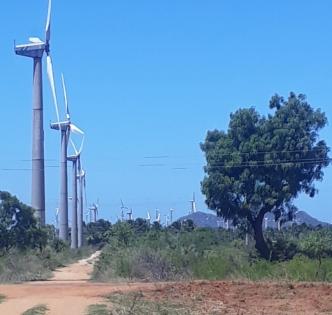India's wind capacity likely to double to 107 GW by 2030: Report
By IANS | Updated: August 26, 2025 17:35 IST2025-08-26T17:32:49+5:302025-08-26T17:35:03+5:30
New Delhi, Aug 26 India has emerged as the world’s third-largest wind equipment manufacturing hub, positioning it to ...

India's wind capacity likely to double to 107 GW by 2030: Report
New Delhi, Aug 26 India has emerged as the world’s third-largest wind equipment manufacturing hub, positioning it to meet 10 per cent of global demand, according to a report released by the Global Wind Energy Council (GWEC) on Tuesday.
The report details how India’s installed wind capacity can more than double from 51 GW to 107 GW by 2030, in line with state-level Resource Adequacy Plans (RAP). This is pivotal to help India achieve the least cost pathway for a successful energy transition.
India is targeting 100 GW of wind capacity, which is expected to contribute 20 per cent of the renewable mix in the country.
The country’s manufacturing capacity has grown from 12 GW in 2022 to 20 GW in 2024.
A higher share of wind power provides significant cost benefits, enhances grid stability, and improves transmission capacity utilisation, making it the least-cost pathway for meeting state-level power adequacy needs.
Scaling wind installations to 8 GW annually could create around 1,16,000 jobs, reduce costs by 10 per cent, and raise domestic content to 80 per cent. Scaling to 15 GW annually could generate around 1,54,000 jobs, states the GWEC report titled "Wind at the Core: Driving India’s Green Ambitions and International Influence".
Addressing grid concerns, strengthening RPO compliance, and aligning bidding processes with state offtake needs could push installations toward the full potential, the report states.
Union Minister for New & Renewable Energy Pralhad Joshi emphasised: "India is executing one of the world’s most ambitious energy transitions — not just to secure our own sustainable future but to shape the global clean energy narrative. Under the visionary leadership of Prime Minister Narendra Modi, we are committed to installing 500 GW of non-fossil capacity by 2030, including 100 GW from wind. With wind expected to contribute nearly a quarter of the renewable mix, India is not only building clean energy infrastructure, but we are also building the future. Reports such as this by GWEC play an important role in guiding stakeholders as we work together to position India as a global clean energy leader."
Disclaimer: This post has been auto-published from an agency feed without any modifications to the text and has not been reviewed by an editor
Open in app